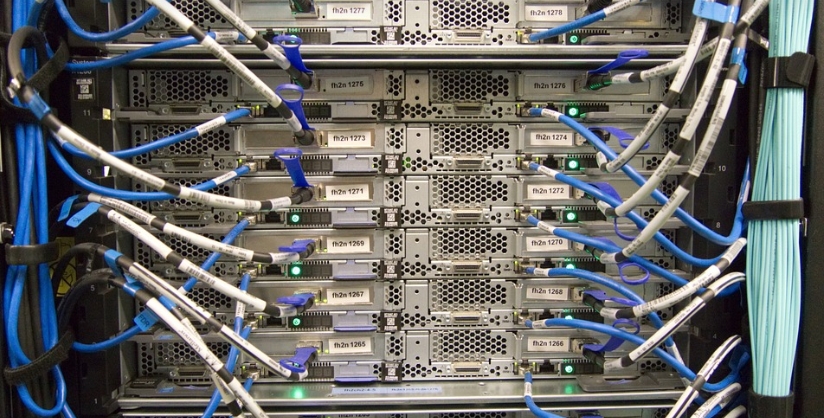Static Transfer Switch (STS): A Reliable Safeguard for Energy Storage Systems
In modern energy storage systems, ensuring continuous and stable power supply is critical. Power fluctuations, outages, or adjustments in energy source priorities often challenge their operation. The Static Transfer Switch (STS) is a core component of energy storage systems, capable of completing power switching within milliseconds. This ensures uninterrupted power for critical loads while enhancing operational efficiency. This article explores STS’s technical features, practical applications, key considerations for selection, and future development trends.
1. What is an STS?
A Static Transfer Switch (STS) is an electronic power-switching device designed for rapid transitions between multiple power sources. Utilizing advanced semiconductors such as Silicon Controlled Rectifiers (SCR) or Insulated Gate Bipolar Transistors (IGBT), the STS can switch power paths within 2-10 milliseconds, ensuring seamless operation of connected devices. Unlike traditional Automatic Transfer Switches (ATS), STS eliminates mechanical wear, offering faster response times and enhanced reliability.
In energy storage systems, STS connects power sources such as batteries, photovoltaic (PV) systems, wind energy, diesel generators, and the grid. It dynamically manages power pathways, instantly switching to backup power or stored energy during grid faults or voltage instability, ensuring reliable operation for critical loads.
2. Key Features of an STS
2.1 Rapid and Seamless Power Switching
STS can switch power sources within 2-10 milliseconds, preventing disruptions to sensitive loads. For instance, in industrial manufacturing, STS ensures production lines operate uninterrupted during grid outages, avoiding downtime and financial losses.
2.2 Intelligent Multi-Power Management
Integrated with energy management systems, STS dynamically prioritizes power sources based on cost and stability. For example, it can leverage PV power during the day and seamlessly switch to stored energy or the grid at night, optimizing energy efficiency and reducing costs.
2.3 Load Priority Protection
STS enables graded management of loads, ensuring critical equipment like servers or medical devices remain operational during outages. Non-essential systems, such as lighting or HVAC, are managed with lower priority, maximizing the reliability of essential operations.
2.4 Enhanced Reliability
Continuous monitoring of grid conditions allows STS to detect voltage drops or outages and initiate immediate power source transitions. This reliability is essential in environments such as hospitals or data centers, where uninterrupted power is paramount.
3. Applications of STS in Energy Storage Systems
3.1 Commercial and Industrial Energy Storage
In an automotive manufacturing plant, STS helps stabilize power for production lines. During grid instability, it switches to battery power within milliseconds and reverts to the grid once stable. This configuration has been shown to save up to 15% in annual production loss caused by power interruptions.
3.2 Residential Energy Storage
In remote residential areas, STS ensures homes maintain power during outages by automatically switching to battery storage. It also prioritizes critical appliances like refrigerators or medical devices over non-essential loads, enhancing energy reliability and convenience.
3.3 Data Centers
Data centers require ultra-reliable power. STS facilitates immediate transitions to backup batteries during grid faults, preventing disruptions to servers and ensuring 99.99% uptime. This minimizes operational risks and strengthens customer trust in service reliability.
3.4 Microgrids and Hybrid Energy Systems
In a mountain-based microgrid, STS integrates energy from PV systems, storage batteries, and diesel generators. It optimizes energy dispatch by dynamically switching to the most reliable and cost-effective source, reducing reliance on fossil fuels and enhancing overall efficiency.
4. Choosing the Right STS Configuration
Selecting an STS for energy storage systems involves assessing specific needs and constraints. Consider the following factors:
4.1 Power Continuity Needs
Critical applications such as data centers, hospitals, or industrial production lines require uninterrupted power. STS’s rapid switching capability minimizes downtime and ensures operational continuity. Non-critical scenarios, like residential lighting, may not require such advanced reliability features.
4.2 Cost Considerations
While STS-equipped systems involve higher upfront costs due to advanced technology, they reduce long-term expenses by minimizing downtime and maintenance. For example, a logistics warehouse saved significant costs by avoiding cold-chain disruptions with an STS system.
4.3 Deployment Environment
In regions with frequent grid fluctuations or outages, STS ensures stable power. Conversely, in areas with reliable grid infrastructure, a simpler system without STS may suffice for peak shaving or energy optimization.
4.4 System Complexity and Maintenance
STS systems require professional installation and maintenance but offer greater flexibility in load management and energy scheduling. For simpler applications, such as small-scale residential storage, non-STS systems provide cost-effective and straightforward solutions.
5. Future Trends in STS Technology
5.1 IoT Integration and Intelligence
Future STS systems will increasingly incorporate IoT capabilities, enabling real-time remote monitoring and smart energy dispatch. Predictive maintenance through AI algorithms will enhance reliability and reduce costs, with case studies showing up to 20% reductions in system maintenance expenses.
5.2 High Voltage and Power Support
As energy storage systems scale, STS will support higher voltage levels (e.g., 1500 V DC) and greater power capacities, reducing transmission losses in utility-scale applications.
5.3 Modular and Scalable Design
Modular STS systems will simplify scaling, allowing users to expand capacity based on evolving energy needs without major infrastructure changes. This flexibility supports growth in renewable energy deployments.
5.4 Sustainable and Green Design
Sustainability will be a focus for future STS systems, with recyclable materials and energy-efficient designs reducing environmental impact over their lifecycle.
6. Conclusion
The Static Transfer Switch (STS) is an essential component of energy storage systems, offering millisecond-level switching, enhanced reliability, and intelligent load management. It provides invaluable support for commercial, residential, and hybrid energy systems, ensuring continuous power and operational stability. With advancements in IoT integration, high voltage support, and modular designs, STS is set to remain a cornerstone of efficient and reliable energy management.



